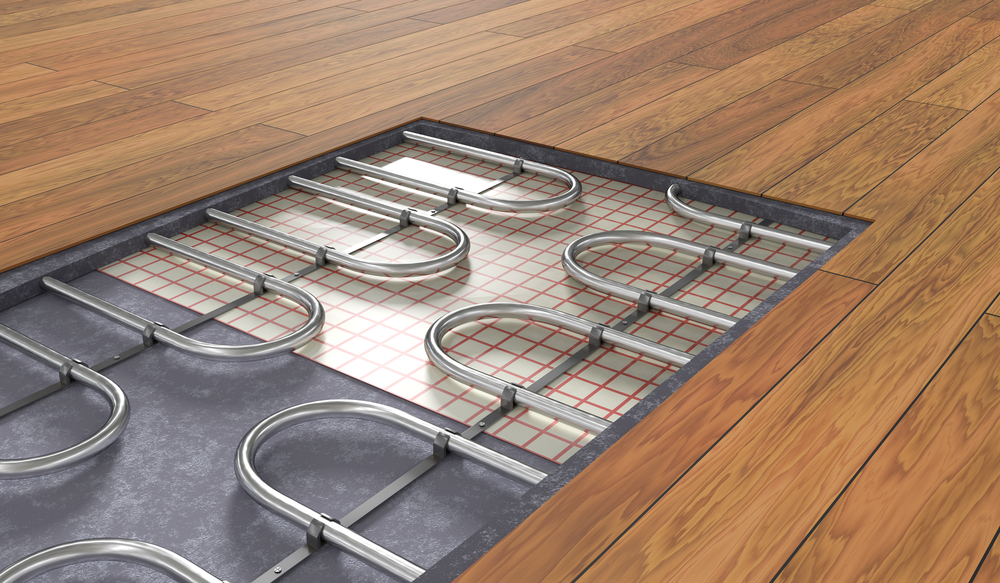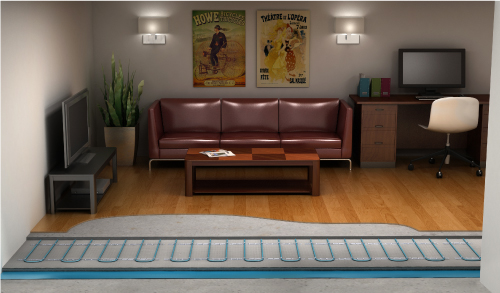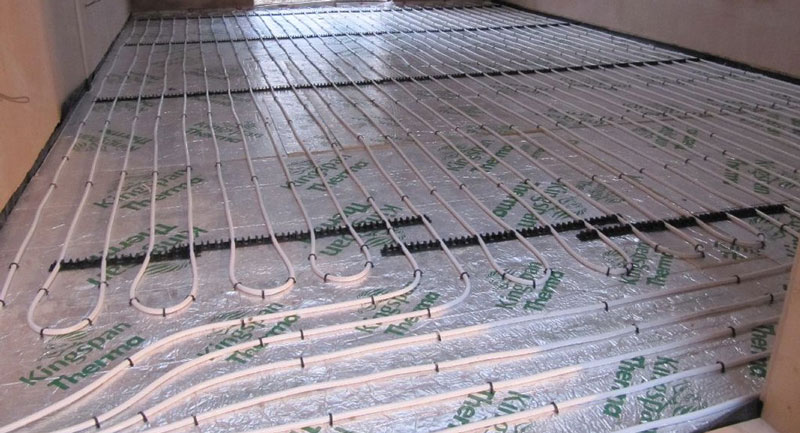Benefits of Having a Warm Basement Floor
A warm basement floor is not just a luxury; it’s a transformative element that can enhance the overall comfort and functionality of your home. Beyond the initial allure of stepping onto a cozy surface, the benefits extend into various realms of daily life. Whether you utilize your basement as a living space, recreational area, or storage, the advantages of a heated floor are manifold.
- Improved Comfort: One of the primary benefits of having a warm basement floor is the increased comfort it provides. Walking on a cold basement floor can be quite unpleasant, especially during the colder months. A warm basement floor ensures that the space is cozy and inviting, allowing you and your family to fully enjoy the area.
- Energy Efficiency: A warm basement floor can contribute to improved energy efficiency in your home. By heating the basement floor, you can help to maintain a consistent temperature throughout the entire house. This means that less energy is required to heat the upper levels of your home, resulting in potential energy savings and reduced heating costs.
- Enhanced Insulation: Heating the basement floor can also provide an additional layer of insulation for your home. The warm floor helps to prevent heat loss through the basement, reducing the overall demand for heating. This can be particularly beneficial if your basement is unfinished or poorly insulated, as it helps to regulate the temperature and reduce drafts.
- Health Benefits: A warm basement floor can also have positive effects on your health. Cold floors can lead to discomfort and even contribute to health issues such as cold feet, joint pain, and poor circulation. By keeping the basement floor warm, you can minimize these risks and promote better overall health and well-being.
- Increased Usability: Having a warm basement floor expands the usability of the space. A cold basement floor can limit the activities that can be done in the area, as it may not be comfortable to spend extended periods of time there. However, with a warm floor, you can transform your basement into a functional and inviting space for various activities such as a home gym, playroom, or entertainment area.
- Prevention of Moisture and Mold: A warm basement floor can help prevent moisture and mold issues. Cold floors can create condensation and moisture buildup, which can lead to mold growth and damage to your belongings. By keeping the basement floor warm, you reduce the risk of moisture-related problems and create a healthier environment in your home.
- Increased Property Value: Finally, having a warm basement floor can increase the value of your property. A well-insulated and comfortable basement is an attractive feature for potential buyers, as it provides additional usable space and enhances the overall appeal of the home. This can be particularly advantageous if you are considering selling your property in the future.

Different Methods to Warm up your Basement Floor
Insulating the Floor: One of the most effective methods to warm up your basement floor is by insulating it. Insulation helps to prevent heat loss and keeps the floor warm. There are several options for insulating the basement floor, such as installing foam boards or using insulation blankets. These materials can be easily installed and provide a barrier against cold air from the ground.
Radiant Heating: Radiant heating is another popular method to warm up a basement floor. This method involves installing radiant heating panels or tubes beneath the floor surface. These panels or tubes emit heat, which warms up the floor and provides a cozy environment. Radiant heating can be powered by electricity or hot water, and it is an efficient way to warm up a basement floor.
Underfloor Heating Systems: Underfloor heating systems are another effective way to warm up your basement floor. These systems consist of electric heating cables or water pipes that are installed beneath the floor surface. The heating cables or pipes generate heat, which is then transferred to the floor, providing a comfortable and warm environment. Underfloor heating systems can be controlled using thermostats, allowing you to adjust the temperature according to your preference.
Carpet or Rugs: A simple and cost-effective method to warm up your basement floor is by using carpets or rugs. These soft floor coverings provide insulation and prevent the cold air from seeping through the floor. Carpets or rugs can add warmth and coziness to the basement, making it a more inviting space. Additionally, they can be easily removed or replaced if needed.
Heating Ducts: If your basement is connected to your home’s heating system, another option to warm up the floor is by installing heating ducts. These ducts distribute warm air from the main heating system to the basement, ensuring that the floor remains warm. Heating ducts can be professionally installed to ensure proper airflow and distribution of heat.
Electric Heaters: For temporary or portable heating solutions, electric heaters can be used to warm up the basement floor. These heaters are available in various sizes and types, such as ceramic or radiant heaters. Electric heaters can be placed strategically in the basement to provide direct heat to the floor area. However, it is important to follow safety precautions when using electric heaters.
Choosing the Right Flooring Option for a Warm Basement Floor
When it comes to choosing the right flooring option for a warm basement floor, there are several factors to consider. Basements tend to be cooler than the rest of the house, so it is important to select a flooring material that can help retain heat and create a comfortable environment. Here are some flooring options that can help achieve a warm basement floor:
Carpet: Carpet is a popular choice for basements as it provides insulation and warmth. It acts as a barrier between the cold concrete floor and the room, helping to maintain a comfortable temperature. Additionally, the carpet is soft and comfortable underfoot, making it a cozy option for basement living areas.
Cork: Cork flooring is an excellent option for a warm basement floor. It is a natural insulator and retains heat effectively. Cork also has a soft and cushioned feel, providing comfort while walking on it. It is also resistant to moisture, making it a suitable choice for basements where dampness may be a concern.
Engineered Hardwood: Engineered hardwood flooring is a popular choice for basements due to its durability and warmth. It consists of multiple layers of wood, making it more resistant to moisture and temperature changes compared to solid hardwood. Engineered hardwood can be installed as a floating floor, allowing for better insulation and warmth.
Luxury Vinyl Plank: Luxury vinyl plank (LVP) flooring is another suitable option for a warm basement floor. LVP is made to mimic the appearance of hardwood or stone, but it is more affordable and easier to maintain. It is also water-resistant and provides good insulation, helping to keep the basement warm.
Radiant Floor Heating: For the ultimate warmth in a basement, consider installing a radiant floor heating system. This involves installing heating elements beneath the flooring, which radiate heat upward. This type of heating system can be used with various flooring materials, including tile, laminate, and engineered hardwood, providing a warm and comfortable basement floor.
Maintenance Tips for a Warm Basement Floor
Regular Cleaning: To maintain a warm basement floor, it is important to keep it clean and free from debris. Regularly sweep or vacuum the floor to remove dirt, dust, and any other particles that may accumulate. This will help to ensure that the floor’s heating system functions efficiently and effectively.
Watch for Moisture: Moisture can be a common issue in basements, and it can negatively impact the warmth of the floor. Keep an eye out for any signs of moisture, such as water stains or dampness. Address any moisture issues promptly to prevent damage to the floor and to maintain its warmth.
Insulate the Basement: Proper insulation is crucial in maintaining a warm basement floor. Insulate the walls, ceiling, and any exposed pipes or ductwork to prevent heat loss. This will help to retain the warmth generated by the floor’s heating system and prevent energy wastage.
Seal Gaps and Cracks: Inspect the basement floor for any gaps or cracks that may allow cold air to seep in. Use appropriate sealants or caulking to seal these gaps and cracks, ensuring that the warmth of the floor is not compromised. This will also help to prevent the entry of moisture and pests.
Protect the Floor: Take measures to protect the basement floor from potential damage that can affect its warmth. Use furniture pads or rugs to prevent scratches and dents caused by heavy objects. Avoid dragging or scraping furniture across the floor to maintain its integrity and ensure optimal heat distribution.
Regular Maintenance of Heating System: Proper maintenance of the heating system is essential to ensure a warm basement floor. Schedule regular inspections and servicing of the heating system to identify and address any issues promptly. This will help to maintain its efficiency and extend its lifespan.
Monitor Temperature and Humidity: It is important to monitor the temperature and humidity levels in the basement. Use a thermostat or a hygrometer to keep track of these factors and make necessary adjustments to maintain a warm and comfortable environment. This will also help to prevent condensation and the growth of mold or mildew.
Professional Assistance: If you encounter any persistent issues or are unsure about maintaining a warm basement floor, it is advisable to seek professional assistance. A qualified contractor or technician can provide expert advice, perform necessary repairs, or suggest improvements to enhance the warmth and functionality of the basement floor.
Heated Basement Floors Basement Floor Heating
Heated Floor for Your Basement Warmup Canada
How to Keep Your Basement Warm in the Winter Epoxy Colorado
Radiant in-floor heat is a wonderful way to turn a cold basement
From the Ground Up: Radiant Flooring – NewHomeSource
8 Reasons to Consider Heated Basement Floors
Related Posts:
- Concrete Flooring Options For Basement
- Sill Gasket For Basement Floor
- Vinyl Flooring In Basement Pros And Cons
- How Thick Are Basement Floors
- Thermal Break Basement Floor
- Interlocking Rubber Floor Tiles For Basement
- Remove Water From Basement Floor
- Types Of Basement Floor Drains
- Basement Floor Cement Sealer
- How To Lower Your Basement Floor








